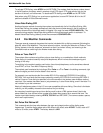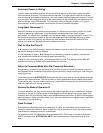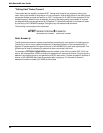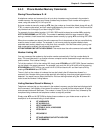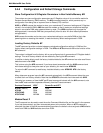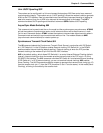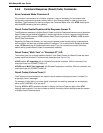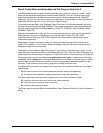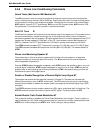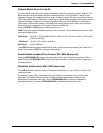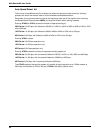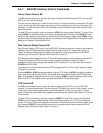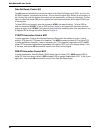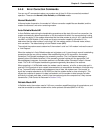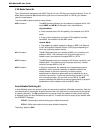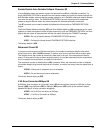
58
MultiModemBA User Guide
5.4.6 Phone Line Conditioning Commands
Guard Tones (Not Used in BAI Models) &G
The &G command is used to control the presence or absence of guard tones from the transmitter
when in Answer mode, at either 1200 or 2400 bps. Guard tones are used in Europe and other areas
for the modem to function in the telephone systems. Guard tones are not used in the United States.
&G0 (default), turns off CCITT guard tones. &G1 turns on 550 Hz guard tones. &G2 turns on 1800
Hz guard tones. This command is not used in international models.
Bell/V.21 Tone B
The B command selects the frequency that the modem uses for its answer tone. (The answer tone is
the tone transmitted by a modem receiving a call to the modem that called it, which initiates the
handshaking between the two modems.) At higher speeds there is no conflict, because all use CCITT
frequencies. At lower speeds (0-1200 bps), in the U.S., some modems use the Bell frequency of
2225 Hz. However, the CCITT specification for V.22 has an answer tone frequency of 2100 Hz.
The ATB0 command enables CCITT frequencies including V.21 (300 bps) and V.23 (1200/75 bps).
The ATB1 command enables Bell frequencies including Bell 103 (300 bps). The modem default is
ATB0.
Phone Line Monitoring Speaker M
The modem has an internal on-board, speaker which functions like the speaker in a telephone
handset to enable you to monitor phone line activity. The M command can be used to determine
when the speaker is operational.
Entering ATM0 disables the speaker completely, while ATM1 causes the speaker to be on only until
a carrier signal is detected. ATM2 causes the speaker to remain on at all times. ATM3 causes the
speaker to be on during dialing and off during handshake. ATM1 is the default setting, and the one
that should be used in most applications.
Enable or Disable Recognition of Remote Digital Loop Signal &T
The modem has several self-test features (covered in Chapter 8). The tests are activated with
different U commands, such as ATU1, and so forth. The &T command is a phone line conditioning
command that enables or disables the modem’s ability to recognize the Remote Digital Loop (RDL)
test signal.
The AT&T4 command lets the modem respond to a RDL signal, and places itself in digital loop. The
AT&T5 command causes the modem to ignore the RDL signal. The factory default is &T5.
Enable/Disable Trelis Coded Modulation #T
This command enables or disables the Trellis Coded Modulation of the modem. There is usually no
need to disable (turn off) Trellis codings except under an unusual line condition called impulse noise.
AT#T0 turns Trellis coding off and AT#T1 turns Trellis coding on (factory default).



